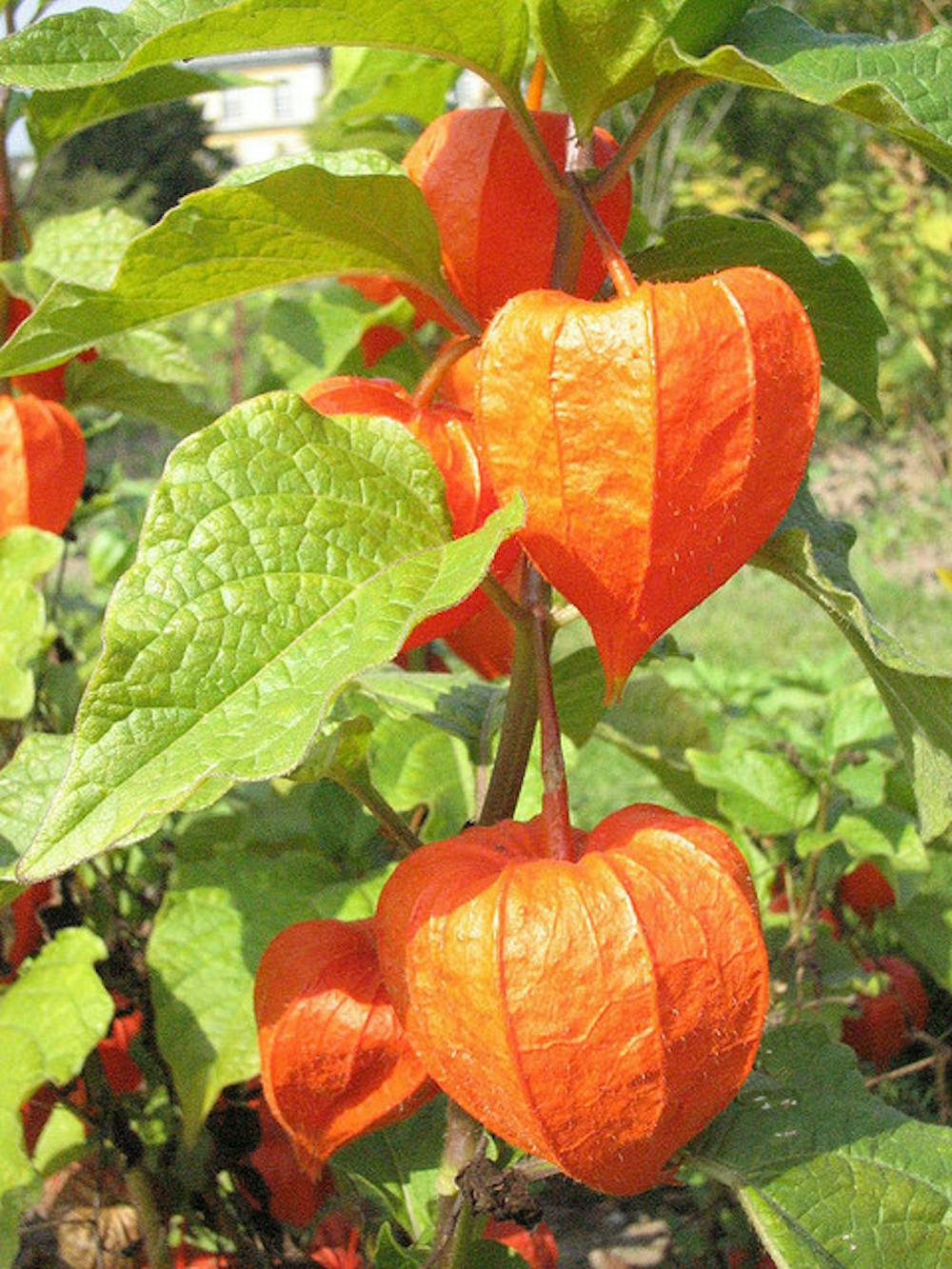
A relative of the tomatillo, the physalis (or groundcherry) is a beautiful little plant whose fruits come bundled in a parchment-like casing. Like most tomatoes, tomatillos, peppers, and other members of the nightshade family, the physalis has no trouble growing in Ohio climates. The light and pretty fruits of the grouncherry make it an aesthetically pleasing plant. Before it fruits, the large, flat, green leaves of the plant create a lovely bush, good for creating seasonal borders around garden beds and alongside a house. The flowers are small, yellow, and bell-shaped. When the groundcherry fruits, it keeps its bushy form, and little lanterns start growing on the branches. Some cultivars have these lanterns turn a bright orange color.
The fruits of the physalis are edible, and they are good alone as well as incorporated into desserts for an exotic look.
However, like many of its nightshade relatives, the leaves, flowers, and all other parts of the physalis plant are toxic and should not be eaten. This means that it’s important to keep curious pets and toddlers away from the plant, or at least under very close supervision.
To grow groundcherries, you can either directly sow the seeds into the ground after all risk of frost has left (around May 12 in Oxford), or start the seeds in early March, giving them plenty of water and sunlight. Groundcherries like a bit of acid in their soil—water them with some tea with lemon, or a bit of black coffee (no sugar!), to keep them happy. Physalis plants are lovely for lazy gardeners because harvesting them is incredibly simple—you just let them drop off the vine, wait a week or so, and scoop up the goods. You want a papery brown husk and deep orange fruit, which only develop after it has fallen from the plant.
It is possible to keep the plant fruiting right into nasty, cold weather, and it doesn’t take much work. When the frosts start coming, cover up the physalis with a tarp to keep it warm. The plant should be well enough to keep on fruiting. The grouncherries keep for a long time: a month or so after the last harvest you can still have a lot of good-as-fresh berries to snack on.
The physalis is a plant that will almost certainly return to the garden the next year—even though the above ground parts of the physalis will die off due to cold, it creates a network of underground rhizomes that will allow it to spread and pop back up again year after year. This means if you are unsure about whether or not you want to make the physalis a permanent member of your garden, you should plant it in a large pot.
Photo License: Creative Commons
The Physalis: Naturally Packaged Desserts

